Themed collection Highlights in Chemistry

Encapsulation, release and applications of LbL polyelectrolyte multilayer capsules
A brief history of encapsulation, release and applications in the field of polyelectrolyte multilayer capsules is highlighted, and perspectives are discussed.
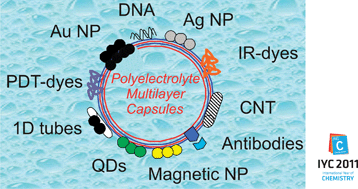
Chem. Commun., 2011,47, 12736-12746
https://doi.org/10.1039/C1CC13453A
20 years of DNA-encoded chemical libraries
The highlight reviews the last 20 years of research in DNA-encoded chemical library field and describes how this new “drug discovery tool’’ will soon greatly contribute both to hit discovery and to a better understanding of biochemical pathways.
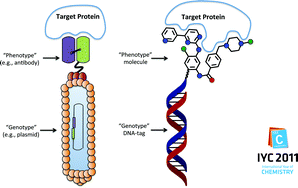
Chem. Commun., 2011,47, 12747-12753
https://doi.org/10.1039/C1CC15634A
Self-assembling peptide scaffolds for regenerative medicine
We discuss current and future peptidic scaffolds as regenerative therapies, with a focus on development of complex and integrated systems.

Chem. Commun., 2012,48, 26-33
https://doi.org/10.1039/C1CC15551B
Toward optomechanics: Maximizing the photodeformation of individual molecules
How to convert light directly into motion? The design of optomechanical systems with focus on optimizing single molecule transduction is highlighted.

Chem. Commun., 2011,47, 12260-12266
https://doi.org/10.1039/C1CC15180K
Asymmetric catalysis with peptides
Peptides have been developed for manifold different reactions as effective asymmetric catalysts.
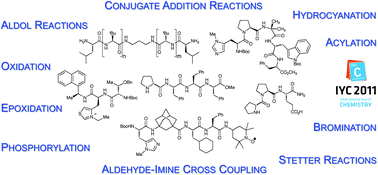
Chem. Commun., 2011,47, 12036-12041
https://doi.org/10.1039/C1CC15237H
Enzyme-directed assembly and manipulation of organic nanomaterials
This highlight describes the last ten years of nascent research into how enzymes, the workhorses of living systems, can be utilized to build and manipulate synthetic organic nanomaterials in new and exciting ways.
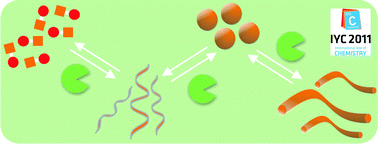
Chem. Commun., 2011,47, 11814-11821
https://doi.org/10.1039/C1CC15220C
Luminescent metal complexes of d6, d8 and d10 transition metal centres
Various classes of luminescent complexes of d6, d8 and d10 transition metal centres and their excited state properties are highlighted.
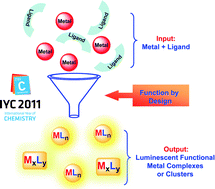
Chem. Commun., 2011,47, 11579-11592
https://doi.org/10.1039/C1CC13767K
Recent progress in actinide borate chemistry
A large and exotic family of actinide borates have been developed yielding unprecedented structural features and useful physico-chemical properties. There are several grand challenges that this work addresses.
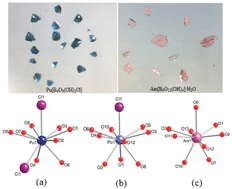
Chem. Commun., 2011,47, 10874-10885
https://doi.org/10.1039/C1CC14023J
Making carbon nanotubes biocompatible and biodegradable
Recent advances on the design of biocompatible and biodegradable functionalised carbon nanotubes have important implications for their potential translation to the clinic.
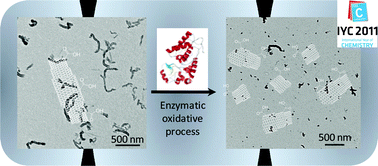
Chem. Commun., 2011,47, 10182-10188
https://doi.org/10.1039/C1CC13011K
Ribosomal synthesis of backbone macrocyclic peptides
This highlight article presents an overview of syntheses of macrocyclic peptides derived from their precursor peptides expressed by translation.

Chem. Commun., 2011,47, 9946-9958
https://doi.org/10.1039/C1CC12647D
The rise, fall and reinvention of combinatorial chemistry
New frontiers in combinatorial chemistry are highlighted, in particular the development of libraries of natural product-like molecules for unbiased screening.
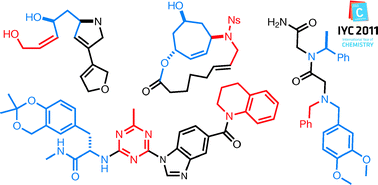
Chem. Commun., 2011,47, 9757-9763
https://doi.org/10.1039/C1CC12102B
Therapeutic applications of gold complexes: lipophilic gold(III) cations and gold(I) complexes for anti-cancer treatment
The present highlight summarizes the recent development of lipophilic gold(III) cations and gold(I) complexes with promising anti-cancer activities.
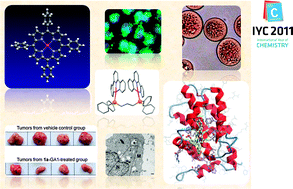
Chem. Commun., 2011,47, 9554-9560
https://doi.org/10.1039/C1CC10860C
Photocatalytic hydrogen production
This Highlight summarizes recent advances in photocatalytic hydrogen production using single or multiple component systems and outlines challenges for future research in this area.
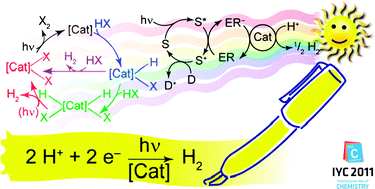
Chem. Commun., 2011,47, 9268-9274
https://doi.org/10.1039/C1CC12390D
Uranium-mediated activation of small molecules
Molecular complexes of uranium are capable of activating a range of industrially and economically important small molecules such as CO, CO2, and N2; new and often unexpected reactions provide insight into an element that needs to be well-understood if future clean-energy solutions are to involve nuclear power.
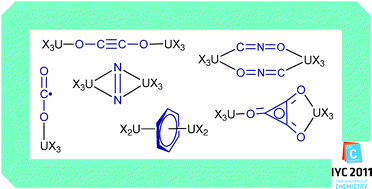
Chem. Commun., 2011,47, 9005-9010
https://doi.org/10.1039/C1CC10834D
Smart nanocontainers as depot media for feedback active coatings
New feedback active systems are main subject of this highlight since many current protective coatings have health hazards and low efficiency.

Chem. Commun., 2011,47, 8730-8739
https://doi.org/10.1039/C1CC13142G
Merging the best of two worlds: artificial metalloenzymes for enantioselective catalysis
Artificial metalloenzymes combine homogenous catalysts and bio-macromolecules by design; the product of which is a hybrid that transmits high ee's and novel products sublime.
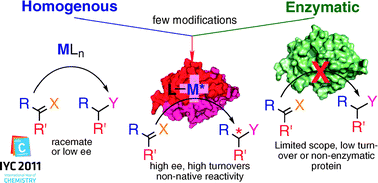
Chem. Commun., 2011,47, 8470-8476
https://doi.org/10.1039/C1CC11592H
Transmembrane anion transport by synthetic systems
Synthetic transport systems for anions may provide potential future treatments for diseases like cystic fibrosis by restoring chloride permeability of epithelial cell membranes.
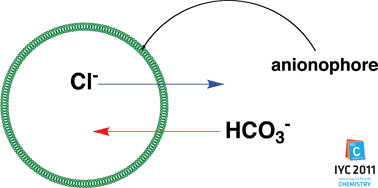
Chem. Commun., 2011,47, 8203-8209
https://doi.org/10.1039/C1CC12061A
Asymmetric hydrogenation of alkenes lacking coordinating groups
Chiral iridium catalysts based on P,N ligands have strongly expanded the application range of asymmetric hydrogenation. They do not require the presence of a coordinating group near the C![[double bond, length as m-dash]](https://www.rsc.org/images/entities/char_e001.gif) C bond and, therefore, allow highly enantioselective hydrogenations of largely unfunctionalized alkenes.
C bond and, therefore, allow highly enantioselective hydrogenations of largely unfunctionalized alkenes.
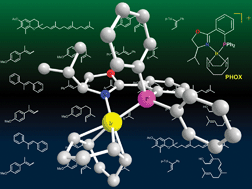
Chem. Commun., 2011,47, 7912-7916
https://doi.org/10.1039/C1CC11430A
Bacterial symbionts and natural products
The study of bacterial symbionts of eukaryotic hosts has become a powerful discovery engine for chemistry.
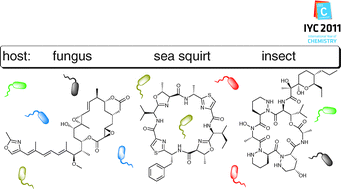
Chem. Commun., 2011,47, 7559-7566
https://doi.org/10.1039/C1CC11574J
“Bucky gels” for tailoring electroactive materials and devices: the composites of carbon materials with ionic liquids
Gelatinous composites formed by dispersion of carbon nanomaterials in ionic liquids are readily processable potent materials with superb electronic properties.
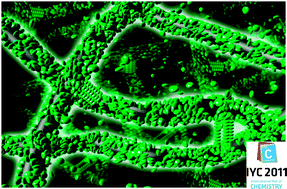
Chem. Commun., 2011,47, 6757-6762
https://doi.org/10.1039/C1CC00043H
Sequencing nucleic acids: from chemistry to medicine
Chemistry has played a vital role in making routine, affordable sequencing of human genomes a reality; this article focuses on Solexa sequencing and its impact on science and medicine.
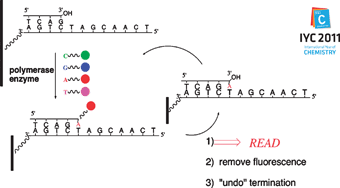
Chem. Commun., 2011,47, 7281-7286
https://doi.org/10.1039/C1CC11078K
Chemistry of nucleic acids: impacts in multiple fields
Nucleic acids chemistry has had widespread influence in biology, medicine and nanotechnology. The future is aiming toward cellular functions.
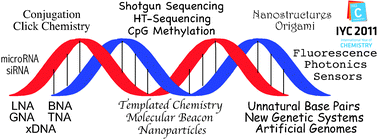
Chem. Commun., 2011,47, 7018-7024
https://doi.org/10.1039/C1CC11021G
Metathesis in total synthesis
This Highlight article describes in an al fresco style how the conceptual framework of metathesis has impacted on the practice of natural product synthesis since the turn of the century.

Chem. Commun., 2011,47, 6505-6511
https://doi.org/10.1039/C1CC10464K
Chemistry and glycobiology
Advances in the synthesis of glycans, glycoconjugates and new technology development have contributed to our understanding of the structure and function of glycans.
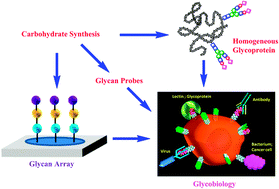
Chem. Commun., 2011,47, 6201-6207
https://doi.org/10.1039/C0CC04359A
Synthetic foldamers
From oligomers to protein-sized architectures, foldamers introduce new tools and concepts to develop bioactive substances, synthetic receptors and materials.
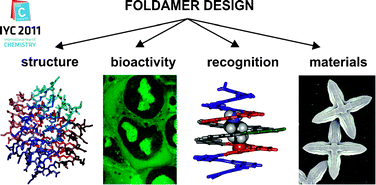
Chem. Commun., 2011,47, 5933-5941
https://doi.org/10.1039/C1CC11137J
Homogeneous catalysis using iron complexes: recent developments in selective reductions
So far the application of iron is underdeveloped in comparison to other transition metals. Herein, we highlight promising examples for hydrogenation, transfer hydrogenation and hydrosilylation, which illustrate the potential of iron and hopefully initialize a ferric future for catalysis.
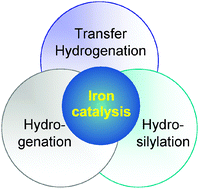
Chem. Commun., 2011,47, 4849-4859
https://doi.org/10.1039/C0CC05733A
Small molecule microarrays: the first decade and beyond
Molecular Bits and Chips: Profiling and discovering the next generation of small molecule ligands.

Chem. Commun., 2011,47, 5664-5670
https://doi.org/10.1039/C1CC11464F
Recent advances in hydrogen -bonded hexameric encapsulation complexes
Recent developments in the chemistry of resorcin[4]arene and pyrogallol[4]arene capsules are reviewed.
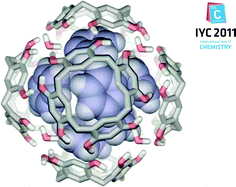
Chem. Commun., 2011,47, 5368-5375
https://doi.org/10.1039/C1CC10150A
Naphthalene and perylene diimides for organic transistors
This highlight article gives an overview on the development of highly promising ambient stable n-channel organic thin film transistors (OTFTs) based on naphthalene and perylene tetracarboxylic diimides during the last decade.
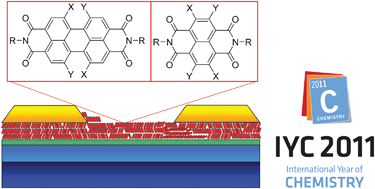
Chem. Commun., 2011,47, 5109-5115
https://doi.org/10.1039/C1CC10321K
Ten key issues in modern flow chemistry
Ten essentials of flow chemistry provide an insight into current and future issues and trends into this emerging field of organic synthesis.
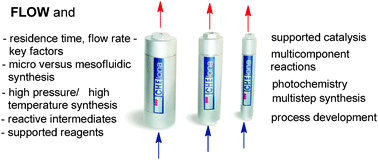
Chem. Commun., 2011,47, 4583-4592
https://doi.org/10.1039/C0CC05060A
Expanded porphyrins and aromaticity
meso-Aryl-substituted expanded porphyrins are simple porphyrin homologues consisting of more than five pyrrolic units but serve as a nice platform to realize versatile aromatic, antiaromatic, and radical molecules including Möbius aromatic and antiaromatic species.
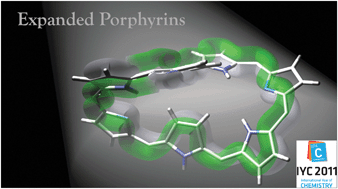
Chem. Commun., 2011,47, 4330-4339
https://doi.org/10.1039/C1CC10534E
Molecular mechanisms of antibiotic resistance
Over the past decade, resistance to antibiotics has emerged as a crisis of global proportion that is threatening our ability to control infectious diseases. The molecular logic of resistance is grounded in the chemistry of antibiotic action and detailed mechanisms of resistance strategies including molecular bypass, enzyme catalyzed degradation, active efflux, and target modification. Highlights from molecular resistance research emerging over the past decade are presented.
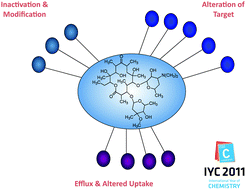
Chem. Commun., 2011,47, 4055-4061
https://doi.org/10.1039/C0CC05111J
Continuous flow organometallic catalysis: new wind in old sails
The design and implementation of sustainable chemical production processes require an increasing integration of molecular and reaction engineering principles as highlighted here for selected examples that capitalize simultaneously on the selectivity control of organometallic catalysis and the process intensification of continuous flow-systems.
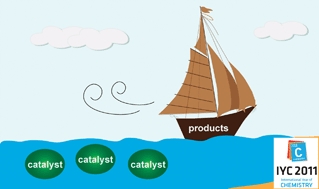
Chem. Commun., 2011,47, 3691-3701
https://doi.org/10.1039/C0CC04958A
Ordered mesoporous materials as adsorbents
Having high surface areas, tunable pore sizes, large pore volumes, stable and interconnected pore networks, and active pore surfaces, ordered mesoporous materials have shown promising performance for capacious uptake and separation of a wide range of guest species through either simple physisorption or well-designed specific binding. Such adsorption-based process may lead to one of the most efficient routes for pollution control, gas storage and bio-applications in the future.
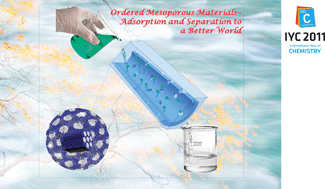
Chem. Commun., 2011,47, 3332-3338
https://doi.org/10.1039/C0CC04909C
Direct C–H carboxylation with complexes of the coinage metals
This article examines advances made towards the catalytic use of carbon dioxide to produce useful compounds and reagents and the promise held by developments in C–H bond functionalisation using CO2.
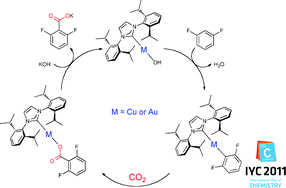
Chem. Commun., 2011,47, 3021-3024
https://doi.org/10.1039/C0CC03890C
Perspectives in imaging using mass spectrometry
Detailed molecular information obtained by imaging mass spectrometry (MS) makes this technique suitable for a range of forensic and clinical applications. The emerging ambient ionization techniques allow imaging in the open environment and are advancing the technology toward surgical practice.
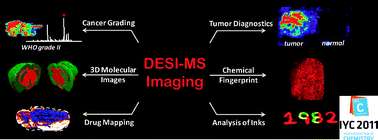
Chem. Commun., 2011,47, 2741-2746
https://doi.org/10.1039/C0CC03518A
Light operated molecular machines
Light is a powerful tool to operate and monitor artificial molecular machines. In future, these systems could enable the construction of intelligent materials or perform functions inside our body.
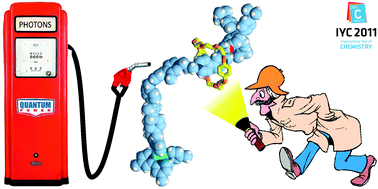
Chem. Commun., 2011,47, 2483-2489
https://doi.org/10.1039/C0CC03829F
Chiral thioether-based catalysts in asymmetric synthesis: recent advances
Chiral non-racemic thioethers, acting as nucleophilic organocatalysts or ligands in metal-catalysis, provide new methodologies enabling asymmetric synthesis of complex targets.
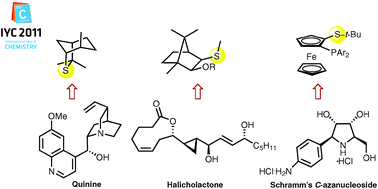
Chem. Commun., 2011,47, 2207-2211
https://doi.org/10.1039/C0CC03978K
Supramolecular gel chemistry: developments over the last decade
Supramolecular gels are fascinating soft materials with a growing list of hi-tech, niche applications. This article reviews the progress in their chemistry over the past decade.
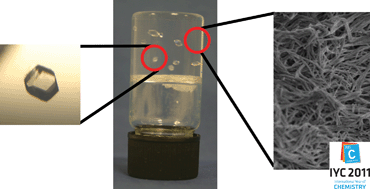
Chem. Commun., 2011,47, 1379-1383
https://doi.org/10.1039/C0CC03293J
Droplet microfluidics: recent developments and future applications
From its origins to current and future applications, basic tools and challenges in the field of droplet microfluidics are reviewed.
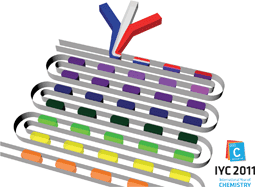
Chem. Commun., 2011,47, 1936-1942
https://doi.org/10.1039/C0CC02474K
Metal-catalysed cleavage of carbon–carbon bonds
This review highlights the recent advances in chemistry of cleaving carbon–carbon bonds by means of transition metals by extracting the notable examples from literature of the past decade.
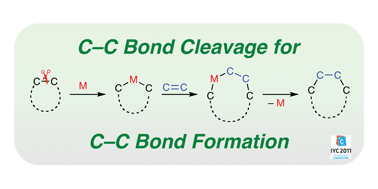
Chem. Commun., 2011,47, 1100-1105
https://doi.org/10.1039/C0CC02566F
Mechanistic insight into NOYORI asymmetric hydrogenations
Mechanistic models of BINAP–Ru-catalyzed asymmetric hydrogenations have presented organic synthetic chemists with “leading concepts” for designing new catalysts.
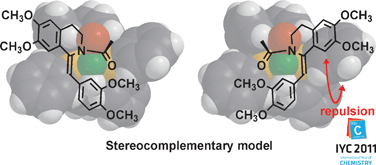
Chem. Commun., 2011,47, 842-846
https://doi.org/10.1039/C0CC01390K
Carbon nanostructures for solar energy conversion schemes
Developing renewable energy is one of the challenges to society in the 21st century. One of the renewable energy technologies is solar energy conversion. This highlight surveys recent breakthroughs in the field of implementing carbon nanostructures—fullerenes (0D), carbon nanotubes (1D), carbon nanohorns, and graphene (2D)—into solar energy conversion schemes, that is, bulk heterojunction and dye-sensitized solar cells.
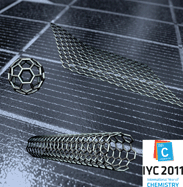
Chem. Commun., 2011,47, 606-610
https://doi.org/10.1039/C0CC02411B
Anion receptor chemistry
This highlight article looks back at progress in anion receptor chemistry in the last decade and ahead to developments in sensing, catalysis and transport that are on the horizon.
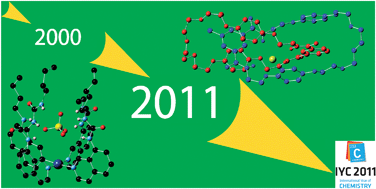
Chem. Commun., 2011,47, 82-86
https://doi.org/10.1039/C0CC00656D
About this collection
2011 is the International Year of Chemistry (IYC 2011), a worldwide celebration of the achievements of chemistry and its contributions to the well-being of humankind. ChemComm is marking IYC 2011 by publishing a series of ‘Highlights in Chemistry’.
We have approached some of the most prominent researchers in the chemical sciences to look back over the most significant chemical advances in their areas of research since the millennium and present their outlook for the future in these short, review-style articles.
We hope the Highlights in Chemistry series will appeal to ChemComm’s broad chemistry readership and introduce non-specialists to significant fields that will continue to be important for the next generation of chemists.
Each issue of ChemComm in 2011 will contain a Highlight in Chemistry but we are also collecting together the articles on this page as they are published to promote this significant IYC 2011 activity and make them easy to browse.